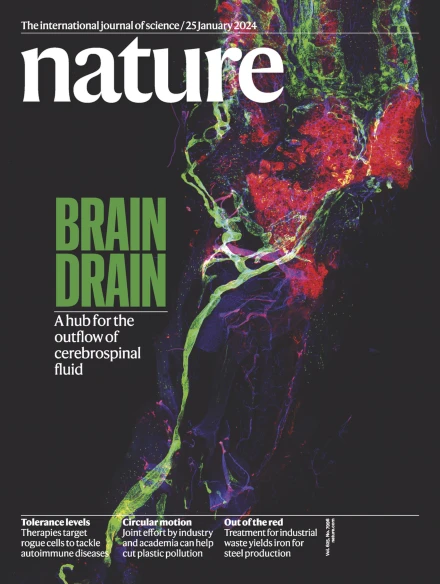Landscape of transcription in human cells
IF 50.5
1区 综合性期刊
Q1 MULTIDISCIPLINARY SCIENCES
引用次数: 4382
Abstract
Eukaryotic cells make many types of primary and processed RNAs that are found either in specific subcellular compartments or throughout the cells. A complete catalogue of these RNAs is not yet available and their characteristic subcellular localizations are also poorly understood. Because RNA represents the direct output of the genetic information encoded by genomes and a significant proportion of a cell’s regulatory capabilities are focused on its synthesis, processing, transport, modification and translation, the generation of such a catalogue is crucial for understanding genome function. Here we report evidence that three-quarters of the human genome is capable of being transcribed, as well as observations about the range and levels of expression, localization, processing fates, regulatory regions and modifications of almost all currently annotated and thousands of previously unannotated RNAs. These observations, taken together, prompt a redefinition of the concept of a gene. A description is given of the ENCODE effort to provide a complete catalogue of primary and processed RNAs found either in specific subcellular compartments or throughout the cell, revealing that three-quarters of the human genome can be transcribed, and providing a wealth of information on the range and levels of expression, localization, processing fates and modifications of known and previously unannotated RNAs. These authors describe the ENCODE (Encyclopedia of DNA Elements) effort to provide a complete catalogue of primary and processed RNAs found either in specific sub-cellular compartments or throughout the cell. They show that three-quarters of the human genome can be transcribed, and provide a wealth of information about the range and levels of expression, localization, processing fates and modifications of both known and previously unannotated RNAs. Collectively, these observations suggest that the current concept of a gene should be revisited.




人类细胞转录的景观。
真核细胞产生许多类型的初级和加工RNA,这些RNA存在于特定的亚细胞区室或整个细胞中。目前还没有这些RNA的完整目录,对它们特有的亚细胞定位也知之甚少。由于RNA代表了基因组编码的遗传信息的直接输出,并且细胞的很大一部分调控能力集中在其合成、加工、运输、修饰和翻译上,因此生成这样的目录对于理解基因组功能至关重要。在这里,我们报告了四分之三的人类基因组能够被转录的证据,以及对几乎所有当前注释和数千个以前未注释的RNA的表达范围和水平、定位、处理命运、调节区域和修饰的观察。这些观察结果加在一起,促使人们重新定义基因的概念。
本文章由计算机程序翻译,如有差异,请以英文原文为准。
求助全文
约1分钟内获得全文
求助全文
来源期刊

Nature
综合性期刊-综合性期刊
CiteScore
90.00
自引率
1.20%
发文量
3652
审稿时长
3 months
期刊介绍:
Nature is a prestigious international journal that publishes peer-reviewed research in various scientific and technological fields. The selection of articles is based on criteria such as originality, importance, interdisciplinary relevance, timeliness, accessibility, elegance, and surprising conclusions. In addition to showcasing significant scientific advances, Nature delivers rapid, authoritative, insightful news, and interpretation of current and upcoming trends impacting science, scientists, and the broader public. The journal serves a dual purpose: firstly, to promptly share noteworthy scientific advances and foster discussions among scientists, and secondly, to ensure the swift dissemination of scientific results globally, emphasizing their significance for knowledge, culture, and daily life.
 求助内容:
求助内容: 应助结果提醒方式:
应助结果提醒方式:


